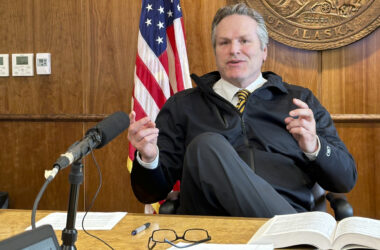U.S. District Court Judge Sharon Gleason ruled that the Environmental Protection Agency could withdraw an earlier determination made regarding potential negative impacts of the Pebble Project. That ruling came on Friday. The EPA has looked to change their original 2014 determination that the Pebble Project mine posed too great a threat to the salmon-rich waters of Bristol Bay.
Pebble CEO Tom Collier, in a Saturday statement, hailed the decision as a major victory for Pebble.
The judge’s ruling was based on the amount of latitude government agencies have and what is subject to legal review, rather than the merits or dangers of the mine. The case focused on a “preemptive veto” the EPA issued during the administration of President Barack Obama, before Pebble Limited Partnership filed an application for the mine in Southwest Alaska.
The EPA said last year it would withdraw its 2014 determination against the mine, which prompted the lawsuit by those opposed to the mining project, including the organizations Trout Unlimited, SalmonState, and Bristol Bay Economic Development Corporation.
The mine’s federal permit application is pending with the U.S. Army Corps of Engineers, and the EPA retains the right to veto the permit, a power that was not diminished by Friday’s ruling.
Mark Hamilton, Vice President of External Affairs for the Pebble Project, says the project is well on its way: “We are very confident that we’re going to get that positive record decision because we’ve done the work. We’ve listened to the concerns, we’ve listened to the suggestions, and we’ve listened to some of the guidance given by the folks involved in the project, by the Corps, by EPA and the like. Ultimately, you pieced together a project that is nearly what you wanted. It meets all of the requirements that are demanded by the agencies that are investigating it.”
He is also not worried about the timetable: “A junior in high school could get a Master’s Degree in Mining Engineering by the time we produce our first ingot of copper, all things working out the way we planned. It’s quite a long project, quite a difficult one, and quite an expensive one. We’ve certainly spent in the neighborhood of a billion dollars thus far. It’ll probably be four years of construction to the tune of north of four-billion dollars. That’ll be a huge impact to the state, by the way: 2,000 jobs for four years building that mine. They’ll feel this coming before we actually produce any copper.”
The Corps of Engineers plans to issue its final environmental impact statement on the project this summer, one of the last steps before issuing a decision on the permit.






